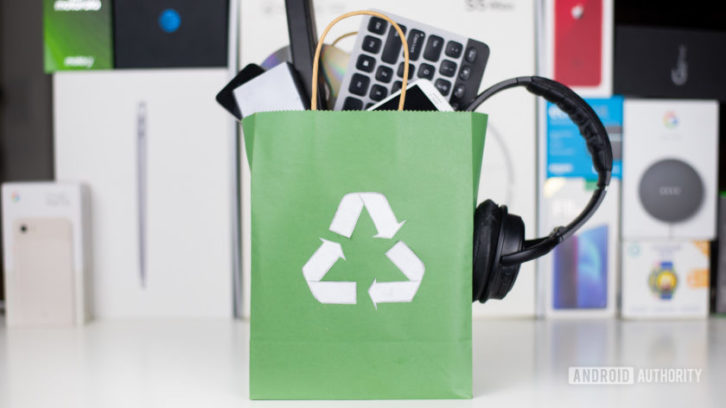
We are all more connected to technology in the modern era than ever before. This is true both in our personal lives and in the business sector. Businesses use smart devices, laptops, video conferencing software, and dozens of other tools only made possible through recent technological advances.
But while all that technology is excellent for productivity and efficiency, it comes at a major cost to the environment. Mining the materials needed to create technology destroys local ecosystems and increases greenhouse gas emissions, and old devices are disposed of without a second thought, their initial usefulness expended.
Even worse, many businesses are not sustainable regarding their tech purchasing and use. If you want your business to be eco-friendly and reduce your corporate tech footprint, your organization needs to know how to follow sustainable approaches to tech.

The Importance of Sustainable Tech for Business
Businesses are more dependent on technology today than ever before. This is even more true thanks to the advent of remote work. With so many companies now offering work-from-home or hybrid working plans, our reliance on new technology and devices is increasing at an accelerated pace.
However, the current rate at which consumers and businesses burn through tech devices and important materials like silicon is unsustainable. According to many sources, key metals like nickel, cobalt, and lithium require a lot of energy to mine and refine. These important metals are needed to develop devices like computers, smartphones, scanners, cars, etc. Other tech developments, such as mining and storing Bitcoin in your wallet, are also very energy-intensive.
Any company that is serious about their commitment to sustainability must consider the importance of how they use, replace and dispose of tech in the workplace. Specifically, one of the easiest places to start is to help the decision makers and leadership of your business grasp how much raw material and how many devices are wasted each year by throwing them away.
Many companies swap out old computers for new ones even if the old devices are still functioning perfectly well. Alternatively, some employees may decide to request new devices or smartphones for work when they run into technical hurdles they don’t feel confident tackling.
These bad habits only contribute to resource waste and the sustainability crisis experienced planetwide. However, if you can train your organization to commit to and focus more on sustainability, you see benefits such as:
- Tax credits, thanks to being eco-friendly
- Increase in employee tech literacy as they learn how to use devices more capably, getting more use out of devices you already own
- More profits and customer loyalty as they recognize your brand as a true champion of sustainability
4 Ways to Focus on Tech Sustainability
Even though it can be tough at first, your brand can emphasize your commitment to tech sustainability in several ways. In addition, many of these changes could lead to ancillary benefits, such as the above-mentioned tech literacy among your employees.
 Protection Plans & Extended Warranties
Protection Plans & Extended Warranties
Firstly, by investing in tech protection plans and extended warranties, you can save your company money and combat repair costs for broken devices.
Many workplace devices that can be covered with a protection plan include:
- Business computers, including desktops and laptops
- Personal devices like smartphones
- Scanners, copiers, and fax machines for sending invoices
- Security devices
- Server hardware, etc.
Fortunately, most device manufacturers and sellers offer extended warranty or insurance plans for those tools. Take advantage of these opportunities as your budget allows. Again, cost savings will appear later down the road when you don’t have to replace dozens of computers at once out-of-pocket.
Device Trade-Ins
Next, your business can focus more on sustainability in technology by trading in old devices. This is an important habit that some employees may need extra training to stick with.
Trading in old devices is beneficial in more ways than one. For example, it often makes new devices more affordable when you cannot fix devices or when you need to upgrade for business purposes. Furthermore, when you trade in old electronic devices, it can help keep them out of landfills.
How, you may ask? Many trade-in programs take in all devices and repair them more extensively and resell to customers who don’t need the latest and greatest device, or donate them to schools or other educational programs. Alternatively, they may harvest important materials like nickel and cobalt from those devices to be used in new technology. Even if you get rid of your old devices with a trade-in program, they aren’t thrown away entirely.
Device trade-in programs help minimize your corporate tech footprint and adopt a more progressive ideology and strategy for your technology use.
Diagnostics and Tech Tutorials
Even with most people being more technologically literate than before, many folks are tempted to simply throw devices away when they encounter technical issues. Education and software, such as diagnostic programs, apps, and tutorials – while more difficult to see instant results – can bring long-lasting behaviors and culture change to your business.
For example, an employee might catch a virus on a smartphone or find that the computer they use no longer works well because of a recent update. Rather than throwing those devices away, it can be better to educate your employees with tech tutorials or run detailed diagnostics.
Tech tutorials can be group seminars and meetings or one-on-one training sessions with specialized software programs. Regardless, improving tech literacy among your workforce can only lead to benefits in the future. The better your employees use their technology, the more productive they’ll be and the more money you’ll save.
Similarly, diagnostic companies, apps, and programs can provide detailed feedback about computers or software and help you find and solve problems rather than throwing technology away. Often, investing a little time in teaching yourself or your workforce how your technology works, or how to fix common issues when it breaks down can lead to massive savings in money and resources.

Tech Recycling Programs
Last but not least, tech recycling programs can benefit your organization if you engage with them regularly. For example, the United States Environmental Protection Agency (EPA) has many different electronics donation and recycling programs you can join.
Donating and recycling electronics is much better for the environment since it conserves natural resources and reduces greenhouse gas emissions. According to the EPA, recycling 1 million laptops saves as much energy as is used to power 3500 US homes over a year.
Even better, many recycling program providers offer convenient mail-in or haul-away options. That means you don’t have to take time out of your busy business schedule to bring old electronics to recycling centers. Some programs will send someone to pick up your old devices or allow you to mail those devices for free.
Conclusion
As you can see, it’s more than possible for any business to use tech sustainably and reduce waste. While your business may not be able to tackle every method right away, try starting with one of the above four strategies to reduce waste, improve employee tech literacy, and do your part for the environment.
See also: Another View: How To Avoid Payment Roadblocks In The Shopper Journey













